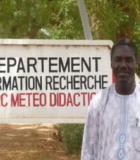Gambia-Senegal Sustainable Fisheries Project (Ba Nafaa)
In West Africa, an estimated 1.5 million tons of fish are harvested annually from the region’s waters, with a gross retail value of US$1.5 billion. In The Gambia and Senegal artisanal fisheries make up a majority of the fisheries landings and contribute significantly to income 2 generation and local food security for coastal communities and for many communities inland where fish are traded. Some 200,000 people in the Gambia and 600,000 in Senegal are directly or indirectly employed in the fishing sector. Seafood products are a leading export of the region and generate as much as 20% of the gross value of exports. While the majority of seafood exports are destined for European Union (EU) markets, a growing volume of trade goes to the U.S. and other countries in the region. Fish provides the main source of animal protein for the average rural family in the sub-region, where annual fish consumption can be as much as 25kg per capita. In many rural areas, fishing serves as a “social safety net” when farming turns unproductive due to depleted soil, drought, disease, or other factors.
Activity Description
The goal of the USAID/BaNafaa Project was to support the Government of The Gambia in achieving its fisheries development objectives by contributing to the following vision: Artisanal fisheries and coastal ecosystems in The Gambia and selected stocks shared with Senegal are being managed more sustainably, incorporating significant participation of fisherfolk in decision-making, and attaining improved economic benefits for both men and women involved in the market value chain.
USAID/BaNafaa built on the on-going efforts of the Department of Fisheries in The Gambia, working with several community fisheries centers and their management committees to improve fisherfolk involvement in the management of fisheries resources. More specifically, to further the development and implementation of the draft fisheries management plan for sole and other selected species. Sole is an important export commodity so this involved partnerships with export processing businesses as well. This is also a shared stock with Senegal. As gender equity was another important aspect of the project, USAID/BaNafaa benefitted both men and women in the fisheries sector by also working with oyster harvesters—a women-dominated fishery whose importance is often under-recognized.
Expected Outcomes
• Strategies to increase social and economic benefits to artisanal fishing communities, and otherwise create incentives for a sustainable fisheries agenda in the WAMER identified, tested and applied
• Institutional capacity strengthened at all levels of governance to implement an ecosystem-based, co-management approach to sustainable fisheries, and to prevent overfishing
• Nursery areas and spawning areas for critical life stages of commercially important species and for associated marine turtles and mammals are protected
• Change unsustainable and destructive marine resource use practices that threaten improved biodiversity conservation in the West Africa Marine Ecoregion
Actual Outcomes
• Management plan developed, formally adopted and gazette
• A combined 127,549 hectares in areas of biological significance are under improved natural resource management as a result of the project.
• Positive trends documented for improved biophysical conditions within areas under improved management.


